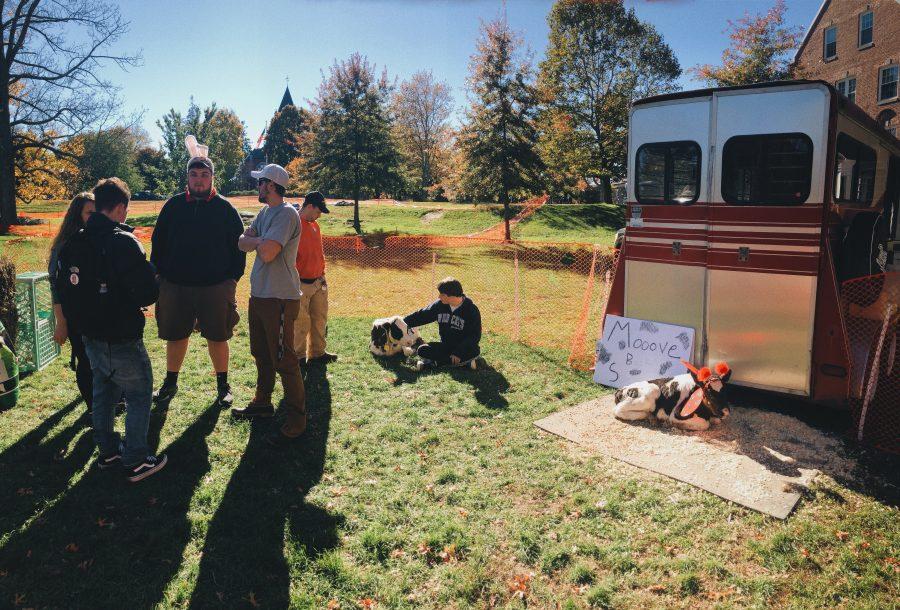A new life-like synthetic cadaver namedXena has anatomy and physiology students excited to dive into a more realistic and hands-on learning experience at UNH’s Spaulding Hall.
Xena was purchased for $60,000 from the $100,000 grant offered by the Provost Office to improve the anatomy labs in Spaulding Hall. The remaining $40,000 was used to upgrade the anatomy lab with new lighting, desks, chairs, a paint job and asbestos removal.

UNH’s new life-like synthetic cadaver, Xena, is located in Spaulding Hall and will be used in the anatomy labs for mimicking human tissue and organs.
Though pricey, Xena is a 90 pound, life-size, synthetic cadaver that mimics what human tissue and organs would look and feel like. With Xena’s help, students are able to explore the mechanics of the human body. Students can pull out Xena’s organs and feel the differences between them. By using an external pump, Xena has a working circulatory system, allowing students to see and feel blood pumping through Xena’s veins.
“There’s nothing like her, she’s the first of her kind here in New England,” clinical associate professor for biomedical science, Mary Katherine Lockwood, said. “I can take her pulse, I can imitate cardiac rhythms, I can show you what happens to the radial pulse when blood pressure drops.” Xena comes from SynDaver Labs, a Florida-based manufacturer of the world’s most sophisticated synthetic human tissues and body parts.
“Admittedly, it was slightly unnerving, Xena is so life-like,” biochemistry graduate student Shannon Barton said.
SynDaver aims to provide an alternative to live animals, cadavers and human patients in medical device studies, clinical training and surgical simulation.
“Once we work her into the curriculum more, we’ll utilize Xena to her full potential,” biological science grad-student and anatomy Teacher’s Assistant Ellie McCabe said.
To make Xena more detailed and realistic, SynDaver uses materials that mimic the mechanical, thermal and physicochemical properties of live tissue. According to SynDaver’s product descriptions, Xena has thermoplastic bones with integral fascia sheaths. The muscular tissues are either organosilicate composite or simplified versions of the SynTissue brand synthetic human skeletal muscle, tendon, fibrous fascia and bone.
“I think Xena is super cool,” junior biology major Margaret McManus said. “You are able to see everything in great detail.”
Students are able to feel the difference between organs, see the inner workings of a body, and strip the layers of muscle tissue to reveal the skeletal system.
“I’m a visual learner,” junior biomedical science major Geneth Chin said. “It is convenient having a life-size cadaver model.”
Xena was named by her manufacturers at SynDaver. She is carbon-based and custom built. For higher costs, SynDaver offers upgrades such as a working nervous system to allow basic muscle movements and reactive pupils.
“She differs from other anatomical models in that she is not made of plastic, but is made of fibers and complex salts, more similar to the structure of our own bodies, giving her the feel of flesh,” Lockwood said.
When not in use, Xena can be found resting in her coffin on the second floor of Spaulding Hall. Her coffin is filled with a mixture akin to pool water to deter bacterial buildup and keep Xena clean and healthy for further use. If maintained properly, Xena can last decades.
“I wouldn’t be surprised if we eventually get more of them,” Lockwood said.

























